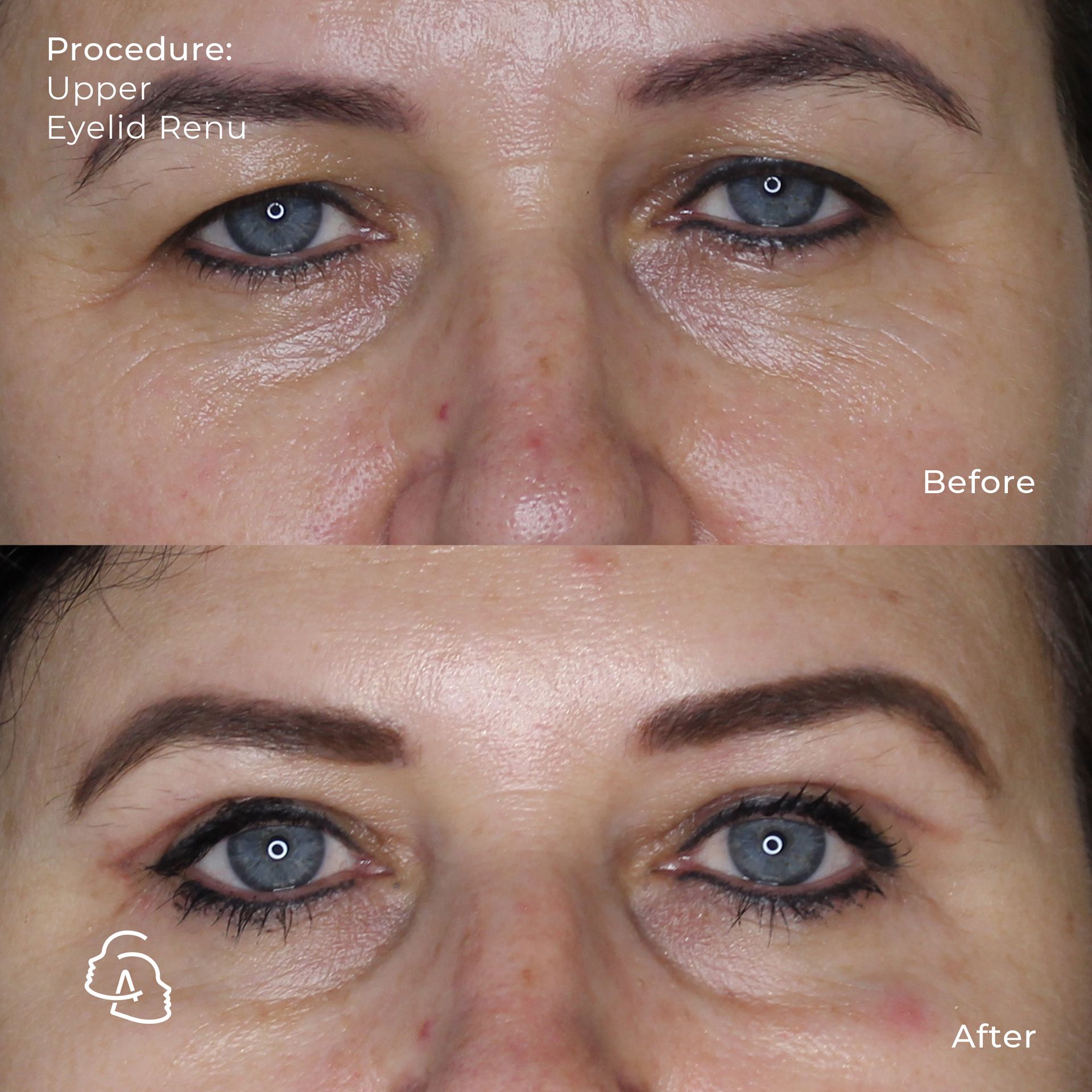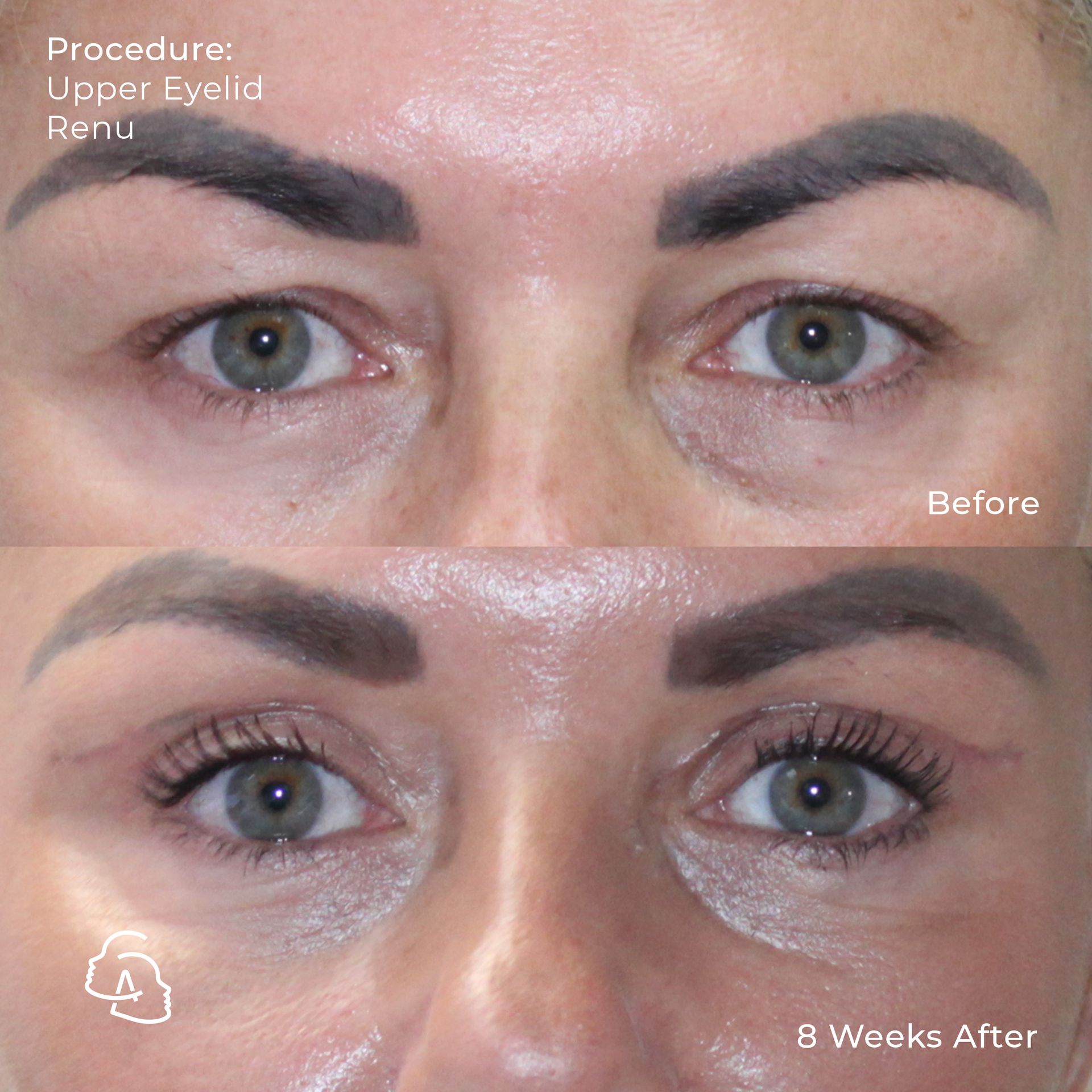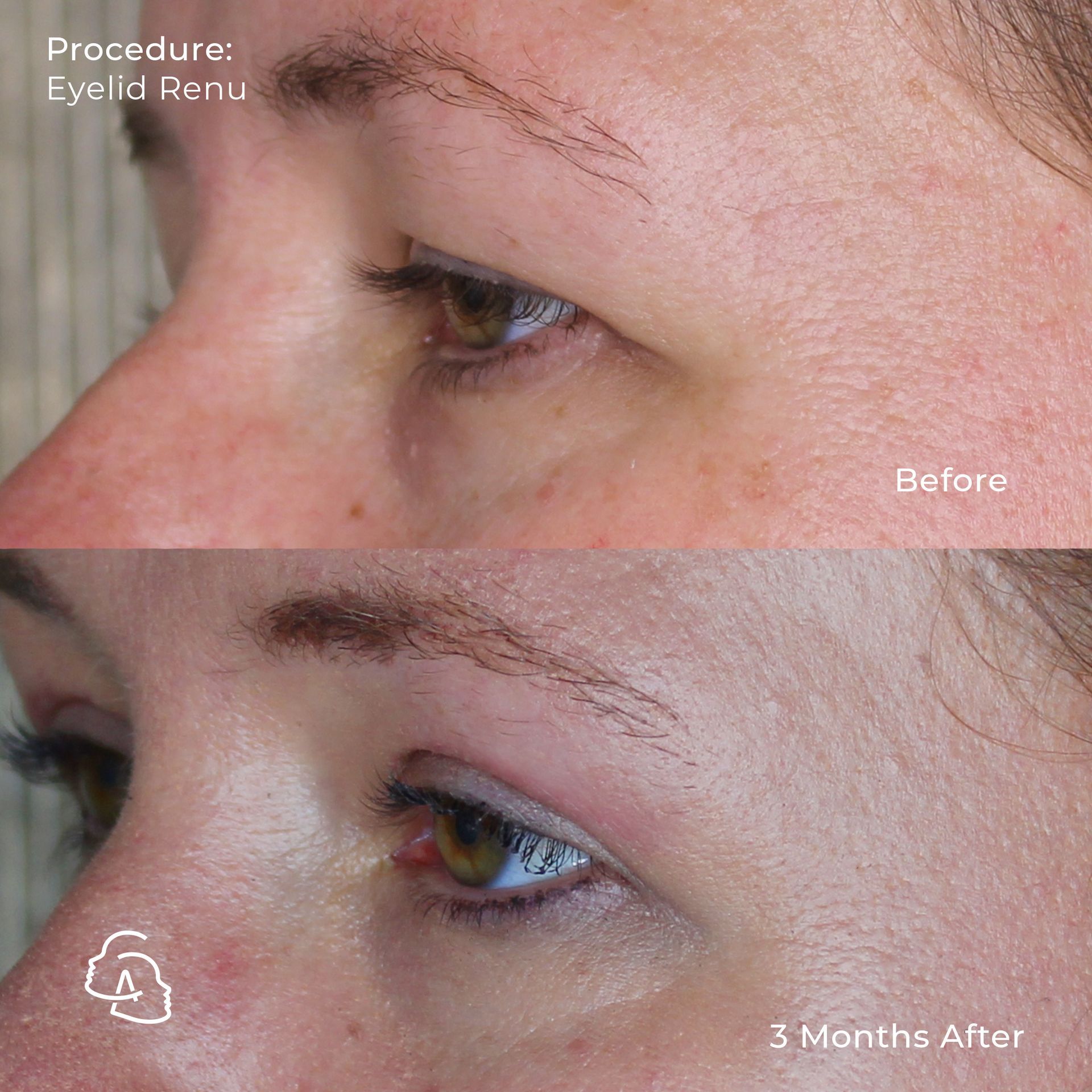Upper Eyelid Renu / Upper Blepharoplasty
Blepharoplasty is a cosmetic procedure that can rejuvenate tired looking eyes. It is also used to correct eyelids that are too puffy, droopy, narrowed or misaligned, resulting in a more alert, energetic and refreshed appearance.
How Does It Work?
Upper Blepharoplasty is a day procedure and is normally performed under local anaesthetic. An incision is made, excess skin and any excess fat bags are trimmed. The incision is closed with very fine sutures, which are often thinner then in human hair.
Discuss your expectations and motivation for surgery with our doctor. This will help determine if you are indeed a good candidate for the procedure and set the stage for a satisfactory outcome.
Arrange for someone to drive you to and from surgery. Plan to have someone stay with you for the first night after returning home from surgery.
Frequently Asked Questions
We have the answers you need...
Contact us to schedule a consultation
Get in touch today! We're open Monday to Friday 9am to 5pm. Find us at 17 Midas Avenue, Olympus Boulevard Office Park, Heartsease Building, First Floor, Asteria House.




